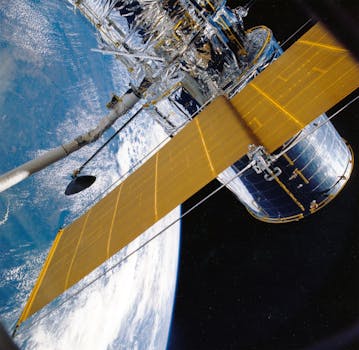From Geostationary to Low Earth Orbit: The Evolution of Satellite Telecommunications in 2023

From Geostationary to Low Earth Orbit: The Evolution of Satellite Telecommunications in 2023
From Geostationary to Low Earth Orbit: The Evolution of Satellite Telecommunications in 2023 has been a remarkable journey, marked by significant advancements in technology and a shift in the way satellites are used for communication purposes. Satellite telecommunications have come a long way since the launch of the first commercial communications satellite, Intelsat 1, in 1965. Over the years, satellites have played a vital role in providing global communication services, including television broadcasting, telephone services, and internet connectivity.
Satellite telecommunications have undergone a significant transformation in recent years, with a shift from geostationary orbit (GEO) to low earth orbit (LEO). This shift has been driven by advancements in technology, changes in consumer behavior, and the need for faster and more reliable communication services. In this article, we will explore the evolution of satellite telecommunications, the benefits and challenges of LEO satellites, and the future of the industry.
The Geostationary Orbit Era
For decades, geostationary orbit satellites have been the backbone of the satellite telecommunications industry. GEO satellites are launched into an equatorial orbit at an altitude of approximately 36,000 kilometers, where they remain stationary relative to a fixed point on the earth’s surface. This allows them to provide continuous coverage of a specific region, making them ideal for applications such as television broadcasting and telecommunications services.
GEO satellites have several advantages, including a wide coverage area, high power, and a long lifespan. However, they also have some significant limitations. The high altitude of GEO satellites results in a significant delay in signal transmission, known as latency, which can be a problem for applications that require real-time communication, such as video conferencing and online gaming. Additionally, GEO satellites are expensive to launch and maintain, which can make them less competitive with other communication technologies, such as fiber optic cables and wireless networks.
The Low Earth Orbit Era
In recent years, there has been a significant shift towards low earth orbit satellites, which are launched into an orbit at an altitude of approximately 160 to 2,000 kilometers. LEO satellites have several advantages over GEO satellites, including lower latency, faster data transfer rates, and lower launch costs. LEO satellites are also more suitable for applications that require real-time communication, such as video conferencing, online gaming, and remote sensing.
LEO satellites have several benefits, including improved performance, increased capacity, and enhanced security. They are also more environmentally friendly, as they have a shorter lifespan and are designed to burn up in the atmosphere at the end of their life, reducing the risk of space debris. However, LEO satellites also have some challenges, including the need for a larger constellation of satellites to provide global coverage, which can be expensive and complex to manage.
Challenges and Opportunities
The shift from GEO to LEO satellites has created both challenges and opportunities for the satellite telecommunications industry. One of the main challenges is the need for significant investment in new infrastructure, including the development of new satellites, launch vehicles, and ground stations. Additionally, there are regulatory challenges, as governments and international organizations work to develop new rules and standards for the use of LEO satellites.
Despite these challenges, the shift to LEO satellites has also created significant opportunities for the industry. The use of LEO satellites has opened up new markets and applications, such as remote sensing, earth observation, and satellite-based internet services. The development of new technologies, such as phased array antennas and advanced propulsion systems, has also improved the performance and efficiency of LEO satellites.
Conclusion
In conclusion, the evolution of satellite telecommunications has transformed the way we communicate, with a shift from geostationary to low earth orbit. LEO satellites have several advantages over GEO satellites, including lower latency, faster data transfer rates, and lower launch costs. While there are challenges to be addressed, the shift to LEO satellites has also created significant opportunities for the industry, including new markets, applications, and technologies.



